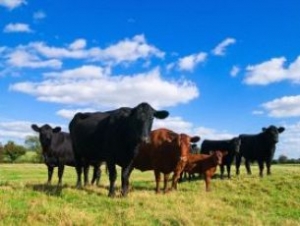Health and Welfare
Implementing an Animal Monitoring System – Part 3 of 3

When cows are provided with the best possible conditions to perform in, management focus shifts to maximizing the economic contribution of individual cows in both the short and the long term.
The nutrition and cow welfare programs continue to strive for consistently providing the herd with the most optimal performance conditions.
The health program strives to timely intervene when cows get sick yet is aware that health issues are only a symptom of nutrition and cow comfort “glitches” of the past. Fostering a proactive approach that examines historical data identifies and fixes the source of the problem when it rises.
The herd’s reproductive status is utilized to provide feedback on the execution of health, nutrition and cow comfort programs. A minimum of 80% of the herd is expected to cycle within the first 60 DIM in a well-run herd. A large portion of the cows that are not cycling by 60 DIM would have had system health events early in a lactation.
With a high level of certainty in the farm’s ability to breed cows successfully and a steady pipeline of replacement heifers, reproduction becomes the tool to maximizing the current lactation’s profitability.
Average weekly milk yield by DIM graph.
Since the shape of a cow’s lactation curve (determined by peak milk and persistency) determines the length and profitability of the lactation, our goal is to time the breeding of cow so that each cow optimally contributes to the herd’s profitability each day of the lactation. For example, breeding high-producing cows too early in the lactation increases the probability of compromising the profitability of their next lactation due to a distressed dry-off. In those cases, a late breeding and extended lactation will optimize their contribution. Not to mention, breeding high-producing cows too early makes you also loose profitable days of production later in their lactations.
Hence, the advanced reproduction program caters to populations within groups:
-
Healthy, high-producing cows may be assigned flexible extended voluntary waiting periods, especially if they are suffering from negative energy balance.
-
High-producing cows that have had health issues during the current lactation may be assigned a DNB status early in the lactation and will be milked until they exit the herd.
-
Average milk producers may be assigned longer VWP.
-
Low-yielding cows are either bred early in the lactation (if they are cycling) or taken out of the herd to make room for cows that will perform better depending on the farm’s future needs.
The underlying principle is that each cow is different. The certainty provided by accurate individual animal information allows us to manage the individual cow with slight variations to take advantage of these differences to the benefit of both animals and the people who work with them.
Though we are early in the “market adoption cycle” of electronic monitoring, empirical evidence suggests that the ability to provide better care to animals combined with a reduced level of stress may hold the potential for longer productive life and the economic impact it holds.















